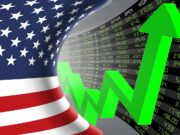Futures are pointing to a continuation of yesterday afternoon’s Fed induced sell-off which knocked the S&P 500 from intraday all-time highs. In minutes from the Fed’s July meeting central bankers said they expect coronavirus fallout to “weigh heavily” on the economy. The report also re-confirmed the fed’s promise to keep interest rates close to zero until the economy is back on track.
Overnight, futures paired some losses after the announcement that Washington and Beijing agreed to revisit the negotiating table in the coming days to review progress of the trade deal that was signed in January. Last week President Trump said he believes that the trade deal was “doing very well.”
There is a bevy of competing forces making it difficult to determine the next move, especially considering the unprecedented recovery from March lows. Where are we headed as we wrap up Q2 earnings season?
A pickup in volatility seems likely. The VIX jumped from its post-covid lows yesterday afternoon and it could keep climbing. Cboe open interest data indicates a strong bias toward the call side, which is a near-term bearish sign. Last week,VIX call open interest was up 12.1% compared to a 4.5% rise in VIX put OI. Index OI participation is down 28.2% from 2019 levels which is a long-term bearish indicator.
Here are a couple of the best ways to play heightened volatility…
ProShares VIX Short-Term Futures ETF (VIXY)
- 1-Year Trailing Total Return: 137.0%
- Expense Ratio: 0.87%
- 3-Month Average Daily Volume: 5.9 M
- Assets Under Management: $426.7 M
- Inception Date: January 3, 2011
- Issuer: ProShares
iPath Series B S&P 500 VIX Short-Term Futures ETN (VXX) –
- 1-Year Trailing Total Return: 139.2%
- Expense Ratio: 0.89%
- 3-Month Average Daily Volume: 59.6 M
- Assets Under Management: $2.2 B
- Inception Date: January 17, 2018
- Issuer: Barclays Capital
Both VIXY and VXX track an index comprised of short-term VIX futures contracts.
Volatility plays can bring huge profits fast, which also means higher risk. We only recommend investing in the volatility index if you are an active investor who can monitor the index closely.












